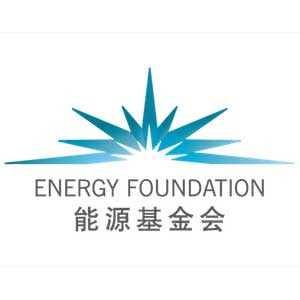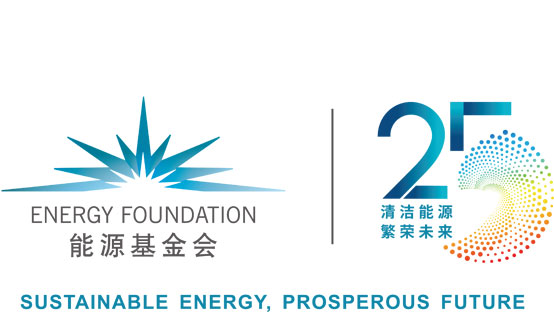Market Mechanisms Propel China’s Green Growth

Once upon a time in China, smog was a foreign concept, something people talked about when London or Los Angeles was mentioned. But since early this century, it has become the focus of the whole country. New words, such as “airpocalypse,” were invented to describe situations where existing vocabularies failed with their insufficiency. The government came up with stringent measures, such as shutting down polluting factories, strengthening supervision and law enforcement at the ground level. Throughout China, vigorous campaigns have been widely carried out in order to stamp out pollution. At the same time, global efforts on addressing climate change has created a major opportunity for China to accelerate the transformation of its economy. As a result, policy measures for energy conservation and emission reduction have sprung up in recent years.
The strong responses had an immediate effect. But the key to solving underlying problems now concerns the way we use market mechanisms to promote green growth and voluntary emission reductions on the part of enterprises, and how we should integrate environmental and climate issues into economic policies.
This is exactly the direction that Energy Foundation China is pushing for. It has worked from providing publicly-released analytical research for China’s first environmental tax law to helping plan and establish a national carbon market.
Exploring the Path to China’s First Environmental Tax Law
As early as 1978, China began to employ economic means to control pollutant emissions. A system of discharge fee was formulated and implemented at that time, which relieved some of the pressures on the environment brought by economic development. However, its legal basis is relatively weak as part of an administrative system, which led to inadequate enforcement.
By the end of the 1990s, environmental tax has become a hot topic among the international academic community. It internalizes the social cost of environmental pollution and ecological degeneration into production costs and market prices. Based on the principle of “polluter pays,” it can effectively inhibit damages to the ecological system by enterprises and lead to survival of the fittest through market mechanisms. In China, the switch from discharge fees to taxes was also becoming part of the official agenda. A well-designed environmental tax law would be more market-oriented and sustainable than the discharge fee system, ushering in greater effectiveness and stricter requirements.
Since 2007, EF China has taken the lead in supporting discussion and research related to environmental tax law among peers and stakeholders. First, it focused on carbon tax, a particular kind of environmental tax. In 2008, it provided support to the Chinese Academy of Fiscal Sciences (CAFS) to complete the country’s first comprehensive plan for a carbon tax, sparking unprecedented discussions on carbon pricing. Since then, EF China has supported a series of studies on the key aspects of environmental tax, effects and problems of the ongoing pollution fee reform, and green tax reform at the macro level, providing technical assistance for the design of environmental taxes.
Environmental tax legislation affects the entire country, involving many different government departments, such as the State Administration of Taxation, the Ministry of Finance, and the Ministry of Environmental Protection (now the Ministry of Ecology and Environment). EF China has worked with their think tanks and created opportunities for open discussion between experts and policymakers, promoting dialogue and collaboration across departments. It has also provided technical assistance and analytical research to help inform drafting efforts.
In order to let more people understand such legislation, EF China’s partners actively engaged media organizations, attracting significant attention from the public and policymakers. Among them, Jia Kang, president of the CAFS and Wang Yi, deputy dean of the Institute of Science and Development (ISD), Chinese Academy of Sciences, published opinion articles during national parliamentary sessions for many consecutive years, expounding the significance of an environmental tax law. Their work helped the topic gain wide support in the country.
After extensive efforts, China’s Environmental Protection Tax Law was approved in 2016 and took effect on January 1, 2018. As the country’s first “green tax law,” it stipulates that environmental taxes—instead of discharge fees—shall be levied on air pollutants, water pollutants, solid waste, and sound noise. According to statistics on tax returns of 2018, the introduction of the tax has created remarkable benefits by encouraging green growth.
Supporting the Establishment of China’s Carbon Market
Around 2007, China overtook the United States to become the world’s largest emitter of greenhouse gases. For the country, reduction of the emission is not only an important duty as a responsible world power, but also an inevitable move in its transition to a low carbon economy. It requires more reliance on effective market mechanisms and smart economic policies. Successful carbon markets in the EU and California can provide valuable lessons for China.
Effectively, carbon market is a trading system for emission rights. Under the constraints of cap control, greenhouse gas emission rights, including that of carbon dioxide, become scarce resource for the purpose of trading activities. In practice, it has been proven that the market not only helps encourage voluntary emission reduction on the part of emitting enterprises, but can also be used to direct capital and funds to cleaner companies, thereby reducing cost of emission for the whole society, and promoting conversion of old to new and outdated to advanced.
From very early on, EF China recognized the explosive potential of carbon trading. Since 2011, it began to promote the establishment of a market in China. At that time, the National Development and Reform Commission (NDRC) was just starting to contemplate about a plan for doing so. EF China invited officials from the NDRC’s Climate Change Department (CCD, now part of the Ministry of Ecology and Environment) and local governments to visit the World Bank, the U.S. Environmental Protection Agency, and other institutions in North America, to learn about the Regional Greenhouse Gas Initiative and Canadian experiences in establishing carbon markets in order to strengthen the country’s resolve in this area. EF China also supported a series of international seminars, focusing on the feasibility of carbon trading in China and potential technology options, thereby promoting a change of domestic discussion from theories to operational aspects of the carbon market. The seminars invited top-notch carbon market professionals from the U.S. and Europe to share their first-hand experiences with experts and policymakers in China.
In late 2011, the NDRC issued a policy document that launched carbon trading pilots in Beijing, Tianjin, Shanghai, Chongqing, Shenzhen, Hubei Province, and Guangdong Province. EF China quickly provided financial and technical support to the promulgation of carbon trading programs in four of the pilot regions: Beijing, Shanghai, Tianjin, and Guangdong. The research projects supported by the foundation focused on evaluation and reporting of emission data, design of a quota auction system, and establishment of management procedures.
In December 2017, China’s national carbon market was officially launched. Since then, EF China has worked to support its operation and further improvement.
The national market involves multi-sectoral and interdisciplinary collaboration. To strengthen communication, EF China supported ISD to create a platform for carbon pricing policy dialogue, inviting various government departments at both national and local levels, which helped enhance mutual understanding and eliminate differences among stakeholders. And they also managed to refine carbon market policies and improved their compatibility with other policies. During dialogues, experts conducted in depth discussion on key issues including the market’s goals, its legal basis, economic impact, and governance in the context of administrative changes in the setup of relevant government departments.
EF China also supported Tsinghua University’s research on design issues related to the carbon market. Analyses on cap targets, allocation methods, and implementation paths have helped inform relevant policymaking.
In the process of building the carbon market, people harbored concerns about its effect on the economy. EF China provided support to theoretical and empirical research on the relationship between carbon markets and economic development, and introduced experiences from the EU and North America through international seminars. “California’s economy has not been hit by its carbon market. Actually, it gained new business opportunities and attracted more talents because of its strong emission reduction policy, which helped the state’s development become more sustainable,” said Fu Sha, Director of Strategic Planning and acting director of the Low Carbon Economic Growth Program at Energy Foundation China. “I hope that these lessons can enhance the confidence of Chinese regions in growing the carbon market.”
EF China’s contribution in this field was recognized by Deputy Director Jiang Zhaoli of the CCD. He said that the foundation played a vital role in the early days of introducing carbon trading to China, drawing on its wealth of international experience to help the country implement a working system on the ground. It first worked on local pilot projects, then provided intellectual and financial support in many key phases during the establishment of the national carbon market, thereby ensuring its smooth development, said Director Jiang.
“In the future, China is going to have more room for development in the area of low carbon economic policies. We will continue to provide analysis and education for the formulation and continuous improvement of carbon market, carbon tax, resource tax, fuel tax, environmental tax, and other pricing policies. We will also seek to rely on correct price signals to curb environmental damage, guide the market to a low carbon, sustainable direction, help China achieve its emission reduction targets, and provide a powerful engine for the low carbon transformation of its economy,” Ms. Fu said.



